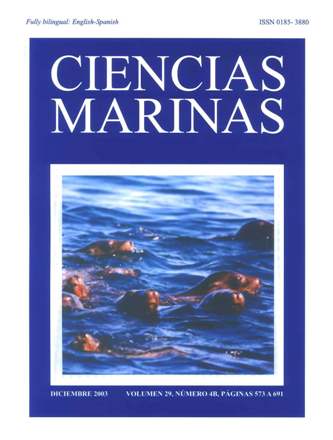Modern sands of the Gulf of Mexico: Discriminating fluvial and coastal sand composition
Main Article Content
Abstract
A forward stepwise linear discriminant analysis, A-Nova test and R-mode factor analysis were used on modern beach, dune and river sands to discriminate the geographic distribution of detrital modes between sands sourced by volcanic rocks (Trans-Mexican Volcanic Belt (TMVB) sands) and sedimentary rocks (Veracruz Embayment (VE) sands). Thirty-three beach, dune and river sand samples were collected across beach-dune profiles, in the inner reaches of the channel and at the river mouth during the dry season. The source terranes for these sands are constituted by Miocene to Pliocene volcanites and by Tertiary to Quaternary siliciclastic rocks. To avoid the constrained character of compositional data, point-count percentages were expressed as compositional modal Log ratios (i.e., Log Qt/Ft = total quartz/total feldspars, Log Qt/Lt = total quartz/total lithics, Log Ft/Lt = total feldspars/total lithics, Log Qm/Fk = monocrystalline quartz/potash feldspars, Log Qm/Fp = monocrystalline quartz/ plagioclase, Log Fk/Fp = potash feldspars/plagioclase, and Log Lv/Ls = volcanic lithics/sedimentary lithics). The linear discriminant and factor analyses showed that the geographical dispersal of detrital modes between the TMVB sands and VE sands are statistically significant by means of the Log Lv/Ls, Log Qt/Ft, Log Qt/Lt and Log Ft/Lt ratios. The A-Nova test and post-hoc analyses showed that the mean differences of the Log Lv/Ls, Log Qt/Ft and Log Qt/Lt ratios are highly significant for the VE river sands and the TMVB dune sands. The composition of the TMVB dune sands is controlled by a longshore drift of quartz supply. The VE river sands are depleted in Ls due to the mechanical and/or chemical weathering of Ls and the influence of TMVB on the composition of the VE river sands.
Downloads
Article Details
This is an open access article distributed under a Creative Commons Attribution 4.0 License, which allows you to share and adapt the work, as long as you give appropriate credit to the original author(s) and the source, provide a link to the Creative Commons license, and indicate if changes were made. Figures, tables and other elements in the article are included in the article’s CC BY 4.0 license, unless otherwise indicated. The journal title is protected by copyrights and not subject to this license. Full license deed can be viewed here.

